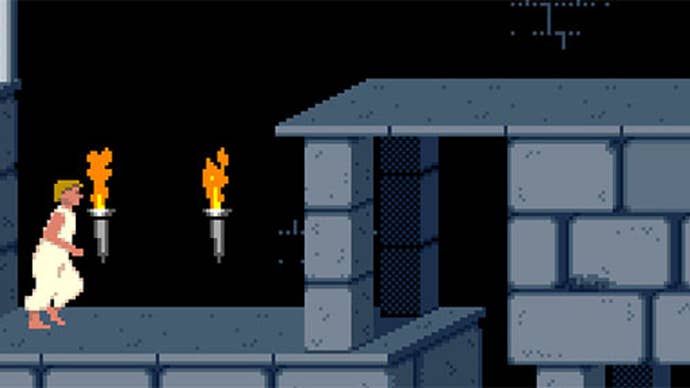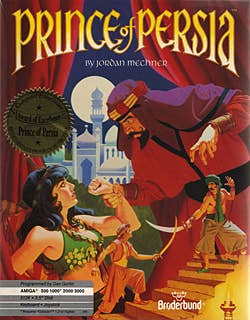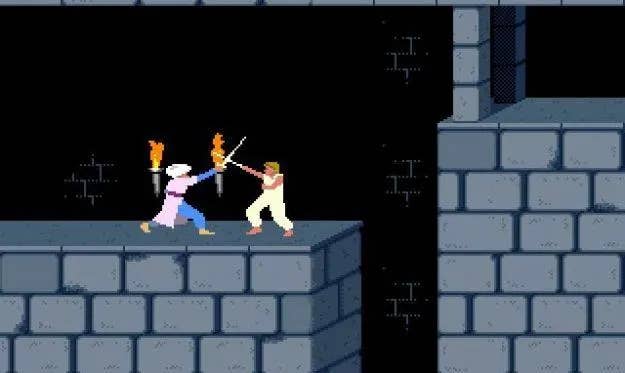For years, I was aware of Prince of Persia without playing it.
I loved platform games, but Prince of Persia didn’t feel like it was just a platform game.

It was the sense that I was looking at something very new and - somehow - also very old.
The difference - and it’s over thirty years' difference - is that I now love this feeling.
It’s nostalgia, but with something stranger mixed in there too.

In many ways, Prince of Persis takes its cues fromKarateka, an earlier game from Mechner.
It has a plot, and it has sprites who move through elegant, recognisably human rotoscoped animations.
But it also has editing - the story cuts back and forth from the goodies and the baddies.

Given this context, Prince is the same, but more and more elaborate.
It’s complex environments with different levels and backtracking instead of the left-to-right progression of Karateka.
It’s sword fights instead of martial arts.

It’s traps and potions and set-pieces, one involving a helpful mouse.
That mouse aside, it’s everything you expect in a designer’s follow-up to an influential classic.
But Prince, as they say, hits different to me.
The Prince is young and perhaps inexperienced, and we can now see that through his animation.
He pelts along but always seems in danger of misunderstanding his own momentum.
His jumps and trips have a human desperation to them.
A lot of what I felt as Prince’s fancy chilliness is actually located here, I think.
This isn’t a criticism: I find it kind of fascinating.
I’m Lara, kind of, but also I’m not Lyra.
That’s the distinct fun of it all.)
That sense of something being new but also old.
I’d never seen animation like this in a video game, but I had seen something like itsomewhere.
I don’t think anybody would think see this as a knock either.
The silent movies were a time of incredible compressed imagination and invention.
And it makes sense.